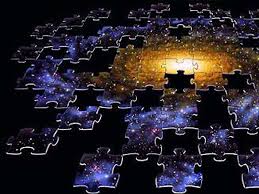
of ”counter-intuitive” ideas
Within this group we could explore various theoretical ideas which may seem ”counter-intuitive”, even... View more
a few questions for the higher and lower "dimensions"
-
a few questions for the higher and lower "dimensions"
Hi everyone. Here’s a few thoughts for the concept of “dimensions”.
How exactly to define the word “dimension”?
Throughout the ages of documented history, countless words had their initial use,
yet over time, their original meanings would tend to expand and grow into many
various other familiar, related, and even more technical concepts.The term “dimension” almost certainly started out as a casual or “off the cuff” type
of idea that was meant to refer to the “height, depth, and width” of physical objects.
Its meaning would eventually seem “other-worldly”, with how to expand upon “time
as the fourth dimension”. However, why is time within the same classification as
“height, depth, and width”? These concepts exist upon completely different planes.The definition of the word “dimension” eventually started to include or extend to
concepts further than that, by introducing “higher dimensions”. And also ascribing
a physical reality for “one or two dimensions” (of one, illustrated by a theoretical line,
and two, for a theoretical plane). To consider these “dimensions” as physical seems
far away from actual science. If these higher and lower dimensions somehow exist,
how to possibly observe them, to know or prove them? If they’re all miniscule and
somehow “curled up into the fabric of space-time”, how to prove that?Physical objects clearly have three dimensions. The objects literally exist
within space. How could “space itself” give them their dimensions or provide them
with three possible degrees of motion? After time was eventually considered
the fourth dimension, from there, the term “dimension” started to lose its
original and understandable meaning, and started to seem unnecessarily
confusing, technical, or even completely inaccurate.The belief that time is a “dimension” is completely unfounded. That isn’t to say
time and space aren’t both relevant to achieve a goal or to solve a problem, such
as to where to meet a friend at a certain time, at a specific place. That also doesn’t
mean their definitions have to actually intertwine into one identity of “space-time”.What is so significant about “height, depth, and width” anyway? What of all sorts of
other more “sideways”, “diagonal”, and other “angled” directions within the geometry
of a given physical object?If somehow all three-dimensional objects throughout existence were to freeze up, or if
they were to even disappear, wouldn’t time continue to exist? Isn’t time inevitable and
unavoidable? Doesn’t it literally have to exist, regardless of what goes on within the
physical universe? or without a physical universe?Of course, the idea of higher dimensions started with Einstein, with his proposition of
time as the fourth dimension. Actually, at the time, the idea of “dimensions” probably
wasn’t much of a scientific term, or even talked about within the realm of physics. It
was only after Einstein that the further dimensions were thought of.The idea that there exist dimensions higher than four seems even more impossible. Why
don’t we see or experience them? The idea of “flatland” was thought of to illustrate 2D
with flat “puzzle pieces”. However, this is solely theoretical and imaginary. Supposedly,
the two-dimensional shapes could see (only, and with “flat eyes”) just the sides of all the
other shapes. If this is so, each of these visible “sides” would represent the “height” to
the puzzle, to add to flatland’s other two dimensions of “depth” and “width”.A two-dimensional plane is only theoretical and un-physical. If a given 2-D plane is said
to have width and depth, there has to exist at least the slightest amount of height, maybe
thinner than the thinnest piece of paper, in order for the plane (or any other object) to exist
within the physical reality.Why would space itself have dimensions? And why would it combine with time, to
create a continuum that propagates gravity? Why isn’t space instead, simply an empty
void which may or not be filled with mass or energy? Isn’t physical mass or objects
what actually have the dimensions, instead of the space in which they exist?Within a few years, Einstein had given space, time, dimensions, and other concepts,
much newer definitions with a mysterious and “science-fictionesque” quality. That some
of the most outlandish ideas since then possibly wouldn’t have gained such an extensive
following throughout the past century. That is, since around that time, theoretical physics
may have started to appear as something that isn’t possible or necessary to understand.Anyway, just a few thoughts. Thanks. 🙂
